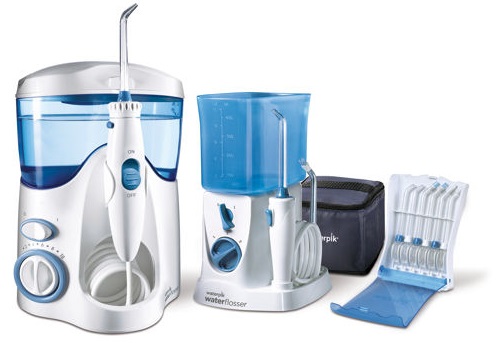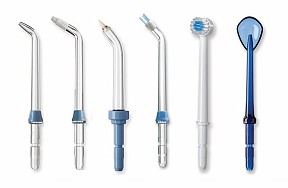Dental Waterpiks are becoming quite popular as a supplement to regulate dental care routines. Many studies have confirmed that these dental Waterpiks can be as effective as flossing when it comes to cleaning between the teeth. They also work 93% more effectively to reduce gum bleeding as compared to dental floss. The problem is that many people do not know how to use a Waterpik. It does not have to be difficult though and is usually nothing more than filling it up with water and charging but you need to ensure the settings are correct. Keep reading to understand more about the benefits and right way of using Waterpiks.
How to Use a Waterpik
Waterpiks are quite effective in many situations. It can rinse out food and bacteria, help change the environment between your teeth, and kill bacteria between the teeth when baking soda is mixed to the water. But you may have several questions about using a Waterpik if this is your first time.
1. Choose the Right Tip
Your shiny new Waterpik will come with several attachments and you can try them all if you want. There will be 6 kinds of tips as demonstrated below, which are, from left to right, Classic Jet tip, Orthodontic tip, Pik Pocket tip, Plague Seeker tip, Toothbrush tip and Tongue Cleaner tip. The Classic Jet tip usually works best for most. However, you may find the Orthodontic and Plaque Seeker tips more effective in getting rid of bacteria and food debris around braces if you have braces.


2. A Detailed Guidance
Once you have found the right tip, the following instructions will help you know how to use a Waterpik.
- Start by filling up the water reservoir with warm water which is beneficial to sensitive teeth. Fill it up to the maximum allowable level to ensure you do not have to refill it in the middle of cleaning.
- Attach the proper tip and set the pressure dial to High Pressure (8 or higher). Lower the pressure if your gums are inflamed already.
- Keep your thumb on the "pause" button before you turn it on. Splashing may happen if you keep your mouth open when cleaning. To avoid this, you can either slight close your lips so the water can run into the sink or you can totally close your mouth and from time to time pause to get water out of your mouth.
- It's doesn't matter if you begin on the bottom or top teeth as long as you clean the lip and cheek side of your teeth as well as the tongue side. Starting in the back and then working your way around each arch work great for many people.
- Keep the tip at about 90 degree angle to your teeth and press the "pause" button before you sweep along the gum line.
3. Tip Replacement
Waterpiks work great, but you need to use it properly and change the attachments every few months. Keep the following recommendations in mind when determining when to replace the tip.
- Change every 3 months for your Pik Pocket tip, Orthodontic tip, Plaque Seeker tip and Toothbrush tip.
- Change every 6 months for your Classic Jet tip and Tongue Cleaner tip.
Watch the video below to know how to use waterpiks to clean your mouth:
Who Should Use a Waterpik?
Now that you know how to use a Waterpik, you may be wondering if you really need to use one. Anyone can use a Waterpik but never use it to replace normal flossing and brushing. For some flossing and brushing routine works fine, but for some others Waterpik is definitely needed. For instance:
- You should use Waterpiks if your gums bleed a lot. Bleeding may well be the result of a bacterial infection or sensitive gums, and that is when Waterpiks work great.
- You may find Waterpiks effective if you are wearing braces. Water floss help get rid of food particles stuck in the brackets which can be hard to out with regular brushing and flossing.
- You will find Waterpiks effective when you have dry mouth. Genetics as well as certain medications may play a role in affecting the production of saliva. Waterpiks help add moisture to your dry mouth and help get rid of sticky plaque.
- You may consider using Waterpiks when you always find stuff stuck in your teeth. The shape of your teeth is usually the problem here, but water flossers can help get rid of food particles from hard-to-reach places.
